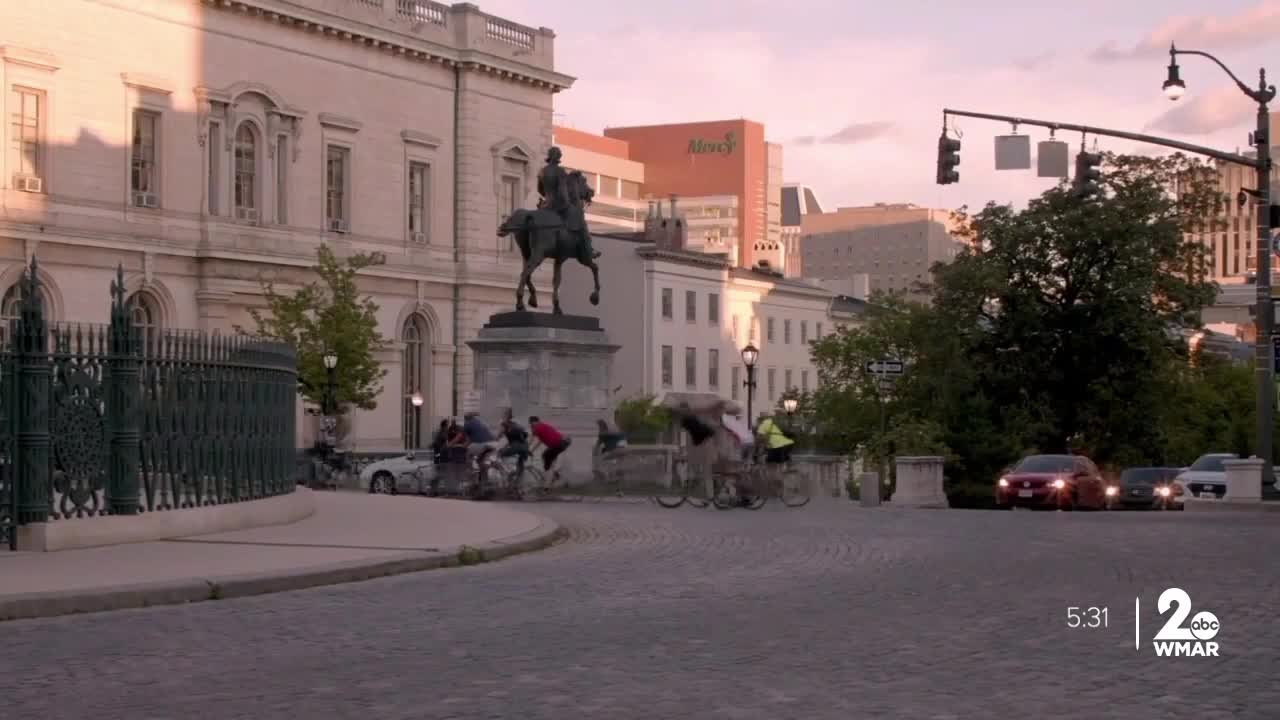BALTIMORE — Before Harborplace made Baltimore's waterfront the place to go, the city's top tourist attraction was farther north: the Washington Monument and Mount Vernon Place.
The elegant column, surrounded by four park squares filled with historic sculptures and marble decorations, is a National Historic Landmark - one of the few such designations for an urban area. It's a focal point for what has long been Baltimore's cultural district, featuring prominent institutions like the Walters Art Museum, the Peabody, and Center Stage theater.
Now a local nonprofit has a new, multimillion-dollar plan to restore the park squares, with hopes of encouraging more investment in the historic Mount Vernon neighborhood in general.
"Back for 150 years, the Washington Monument was the first thing that anyone came to see in Baltimore from out of town, until Harborplace was built," explained Lance Humphries, executive director of Mount Vernon Place Conservancy.
"We like to think it's one of the most important places in the city... Mount Vernon Place certainly has a lot of emotional attachment to it by people from around the world and people who have lived here in the past."
Mount Vernon Place Conservancy was formed in 2008 to oversee the monument and parks; it restored the Washington Monument in 2014-2015, which cost $7 million and has since drawn about 130,000 since the reopening. Humphries noted that 50,000 people have climbed the monument's 227 marble steps that people have been climbing for 200 years, "which is pretty cool."
Now the organization is looking to raise about $12 million to fix the infrastructure, make the parks more accessible, preserve historic stone elements, and do new landscaping. The Conservancy has raised nearly $8 million in the past year, including $4.5 million from the state, $1 million from the federal government, and $1 million from the city. (The plans for the squares also need final approval from the city.)
"The state has been very generous. They know this is a major state asset, as well as city asset," Humphries said. "We just really want this place to shine into the future."
He added:
"Our plan is really a holistic one that is lots of infrastructure work underground that no one will ever see, but there hasn't been a major infrastructure investment in at least 100 years."
The holistic nature of the project speaks to the special nature of Mount Vernon Place, which "really became an extraordinary example of American design and architecture," he said.
Humphries also hopes the plan can be part of the broader revitalization of Mount Vernon that still needs to happen. Many area institutions took a hit during COVID, although he said visitation to Mount Vernon Place is back to about 75 percent to where it was before COVID.
He hopes the Conservancy's investment encourages further investment - for example, to build on some of the neighborhood's vacant lots.
"Our building stock in this neighborhood is fantastic, but it's huge, and while they look like they're all single-family houses, they're not anymore, they're apartments or condos," he said. "So there needs to be a lot of investment in these now 150-year-old buildings to kind of keep them around for another century... We think we're a part of that."




